Here’s your guide for a smooth landing :
Trip to Rio de Janeiro, Brazil, often called the “Cidade Maravilhosa” (wonderful city), is a place that truly lives up to its name. From the towering peaks of Corcovado and Sugar Loaf Mountain to the famous beaches of Copacabana and Ipanema, Rio de Janeiro is a city that awakens all your senses. The beat of samba drums fills the air, the scent of bolinhos de bacalhau lingers, and the salty ocean breeze makes the atmosphere alive with energy. Every corner of Rio de Janeiro feels vibrant, making it a city unlike any other in the world.
Table of Contents
Arrinving in Rio de Janeiro


When you arrive in Rio de Janeiro, you’ll have two main airports to choose from: Galeão International Airport (GIG) and Santos Dumont Airport (SDU). Each airport offers a different experience depending on your travel plans and arrival times, but both provide convenient access to the city and popular tourist destinations.
Galeão International Airport (GIG): Galeão International Airport (GIG) is the larger of Rio’s two airports and functions as the city’s main international gateway. Situated on Governador Island, approximately 20 kilometers (12 miles) north of the downtown area, it serves as a major hub for international flights.. While not as busy as São Paulo’s airports, it’s still a major entry point to Brazil. The most convenient way to get to the city from GIG is by Uber, with a ride to popular tourist areas like Copacabana or Ipanema costing around R$50 (approximately $10 USD).
Another option is the airport bus service, which runs directly to key locations like Copacabana, Ipanema, and Barra da Tijuca. For a budget-friendly choice, the BRT (Bus Rapid Transit) system connects the airport to the metro network, offering easy access to the city center. If you’re familiar with public transport, this is an affordable option, though it may require a little more time compared to an Uber.
Santos Dumont Airport (SDU): Located just 2 kilometers (1.2 miles) from the city center, Santos Dumont is much more centrally located and handles mostly domestic flights. Its proximity to Rio’s downtown and southern neighborhoods makes it a more convenient option if you’re flying from within Brazil. From SDU, you can easily reach areas like Copacabana, Lapa, and the historical center by Uber, with fares averaging around R$30-40 (about $6-8 USD). Alternatively, you can hop on a taxi or take public transport to your destination. For a scenic start to your Rio de Janeiro adventure, consider taking a taxi or Uber and enjoy the ride along the coastline with views of the bay.
Whether you’re arriving at Galeão or Santos Dumont, you’ll be in for an exciting adventure in Rio de Janeiro, with plenty of options to kickstart your Brazilian getaway.
One’s destination is never a place, but a new way of seeing things. – Henry Miller
Getting Around Rio de Janeiro

Rio de Janeiro boasts an extensive and diverse public transportation network that allows tourists to easily explore the city’s many attractions. Whether you’re hopping between beaches, visiting famous landmarks like Christ the Redeemer, or commuting around downtown, Rio offers a range of convenient travel options. The most efficient way to get around is by using a RioCard, a prepaid card that works across multiple modes of transport, including buses, metros, VLT (light rail), and the BRT (Bus Rapid Transit) system. The RioCard simplifies travel by consolidating fares into one, making it easier for tourists to get around without constantly worrying about tickets or exact change.
By Metro:
The metro is arguably the fastest and most reliable way to travel through Rio de Janeiro, especially for tourists heading from the beaches to the city center. With modern and clean trains, the metro is a great option to beat the traffic, especially during rush hour. Key stations like Ipanema, Copacabana, and Botafogo are conveniently located for visitors staying in the city’s popular neighborhoods. The metro is both affordable and secure, with clear signage that makes it easy for newcomers to find their way around. The trains are air-conditioned, which is a huge benefit during Rio’s hot, humid summers. It’s a must-have for anyone visiting Rio, as it takes you to many important areas, including downtown and the Maracanã Stadium.
By VLT (Light Rail):
The VLT is a newer addition to Rio’s public transport system, serving the downtown area and connecting key transport hubs like Santos Dumont Airport and Novo Rio Bus Terminal. It’s especially useful for tourists who are staying in or exploring the center of Rio de Janeiro, as it covers important locations such as Praça Mauá, Santos Dumont, and the Porto Maravilha area, which is home to cultural attractions like the Museum of Tomorrow. The VLT is easy to navigate, and the RioCard makes hopping on and off a breeze. It’s a comfortable and scenic ride, providing a view of the revitalized port area, and is ideal for tourists who want to explore Rio’s growing cultural district.
By Bus:
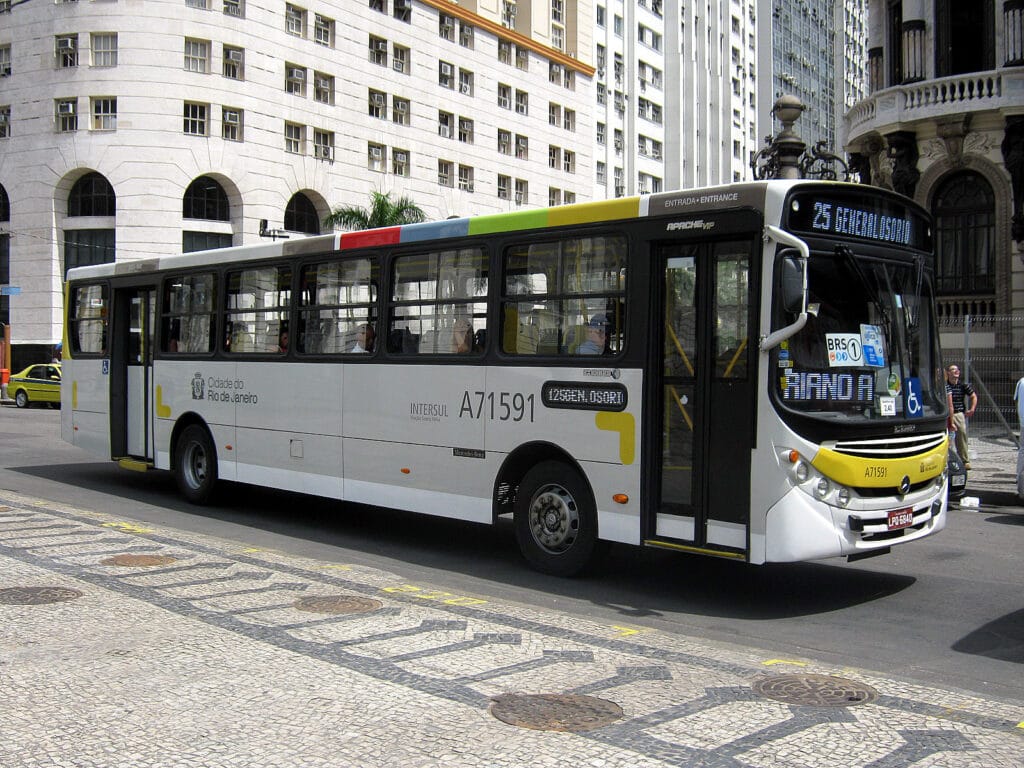
Rio’s bus network is extensive and covers nearly every part of the city, from the favelas to the southern beaches. However, the buses can be unpredictable in terms of schedules, and they may get crowded during peak hours. Using apps like Google Maps helps to track routes, stop times, and find the nearest bus. One important thing to remember is that buses don’t always stop unless flagged down—make sure to signal the driver if you want to board. Buses are a great option for reaching more remote areas that are not well served by the metro, especially in neighborhoods like Barra da Tijuca or farther north. They are also quite affordable and accept payment via RioCard.
By BRT (Bus Rapid Transit):
The BRT system is another great and cost-effective way to get around the city, particularly to areas not directly served by the metro. The BRT operates on dedicated bus lanes, meaning it can avoid traffic congestion. It’s especially useful for traveling between areas like Barra da Tijuca and Centro. You can easily transfer to the metro or VLT from the BRT for a seamless trip.
Local Must-Know Tips
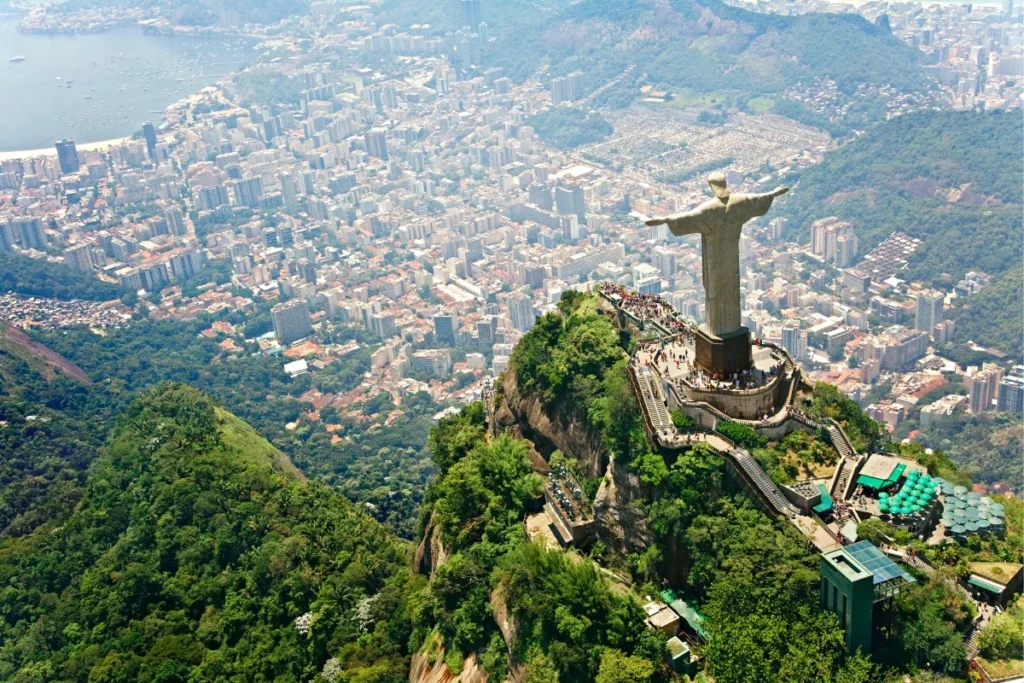
Rio de Janeiro is full of vibrant culture and iconic sights. Start your adventure with a visit to Christ the Redeemer, one of the New Seven Wonders of the World, located at the top of Corcovado Mountain. The panoramic views of the city, beaches, and surrounding bay are breathtaking and offer an unforgettable perspective of Rio.
If you’re after a beach day, make your way to Copacabana or Ipanema. These famous beaches are perfect for soaking up the sun, enjoying local food and drinks from beach kiosks, or joining a game of beach volleyball. Don’t forget to try açai bowls or caipirinhas from the kiosks while you’re there.
Lastly, always stay alert when using public transportation, especially in crowded areas like the metro during rush hour or on busy buses. Pickpocketing can be an issue in densely populated spots, so be mindful of your belongings and keep your valuables secure. By staying aware and using the RioCard for a smooth, hassle-free journey, you’ll be able to fully enjoy Rio’s attractions, culture, and stunning beaches with ease.
Related: Traveling in Portugal on a budget
Exploring Rio’s Neighborhoods
Rio de Janeiro is a city of diverse neighborhoods, each offering a unique experience that reflects the city’s rich culture, history, and stunning landscapes. From the iconic beaches to bohemian enclaves and panoramic views, exploring Rio’s neighborhoods is one of the best ways to truly get to know the city. Whether you’re relaxing by the sea, delving into its colonial past, or enjoying its vibrant nightlife, there’s something for every traveler.
Copacabana: The Iconic Beach Paradise
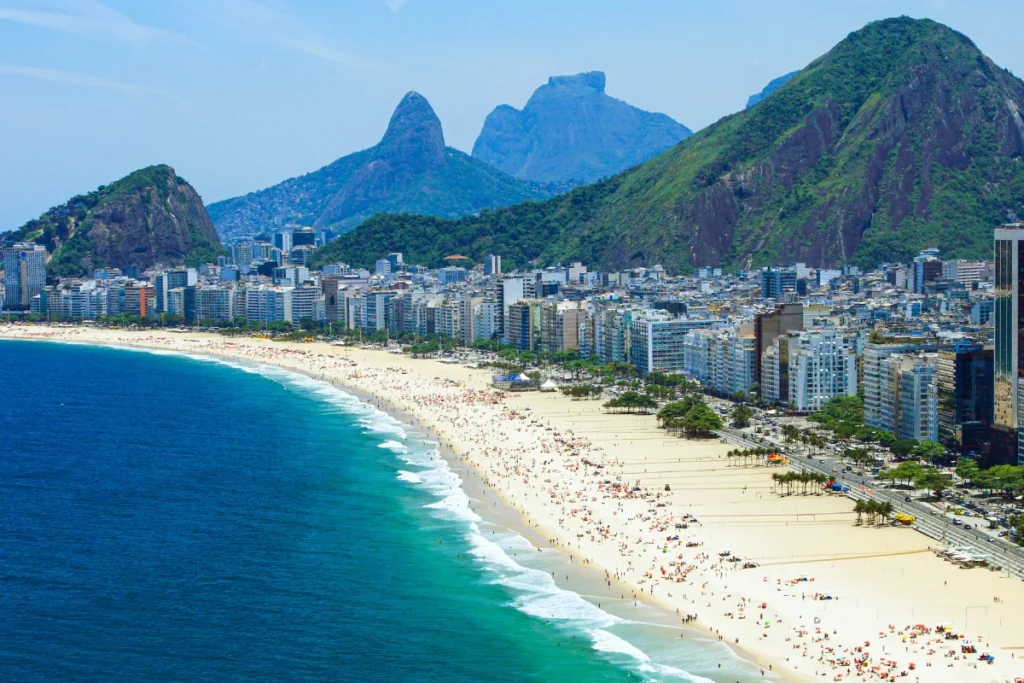
One of the most famous neighborhoods in Rio de Janeiro, Copacabana is synonymous with sun, sand, and lively beach culture. The Copacabana Beach (Avenida Atlântica, Copacabana) stretches over 4 kilometers of golden sand and is perfect for sunbathing, swimming, or enjoying a drink at one of the many beachfront kiosks. It’s also home to some of Rio’s most famous nightlife spots, including Bar do Copa (Avenida Atlântica, 1702), a chic bar that’s ideal for watching the sunset with a caipirinha in hand.
For a touch of history, take a walk along the Fortaleza de Copacabana (Avenida Atlantica, 1020), a historic military base that offers stunning views of the beach and houses a museum showcasing the country’s military past.
Ipanema: Trendy and Chic
Just south of Copacabana, Ipanema is Rio’s upscale neighborhood, famous for its fashionable crowd and sophisticated vibe. The iconic Ipanema Beach (Avenida Vieira Souto) is perfect for those who enjoy a more laid-back, yet stylish beach experience. The beach is divided into sections, each catering to different crowds, with Posto 9 being the hotspot for young locals and tourists alike.
For a local culinary experience, try the delicious Brazilian dishes at Zaza Bistro (Rua Joana Angélica, 40), a trendy restaurant that mixes contemporary flavors with a cozy atmosphere. Ipanema is also the place to find high-end boutiques and art galleries. Don’t miss the Ipanema Hippie Fair (Praça General Osório) on Sundays, where you can buy handmade crafts, local artwork, and unique souvenirs.
Santa Teresa: The Bohemian Heart of Rio
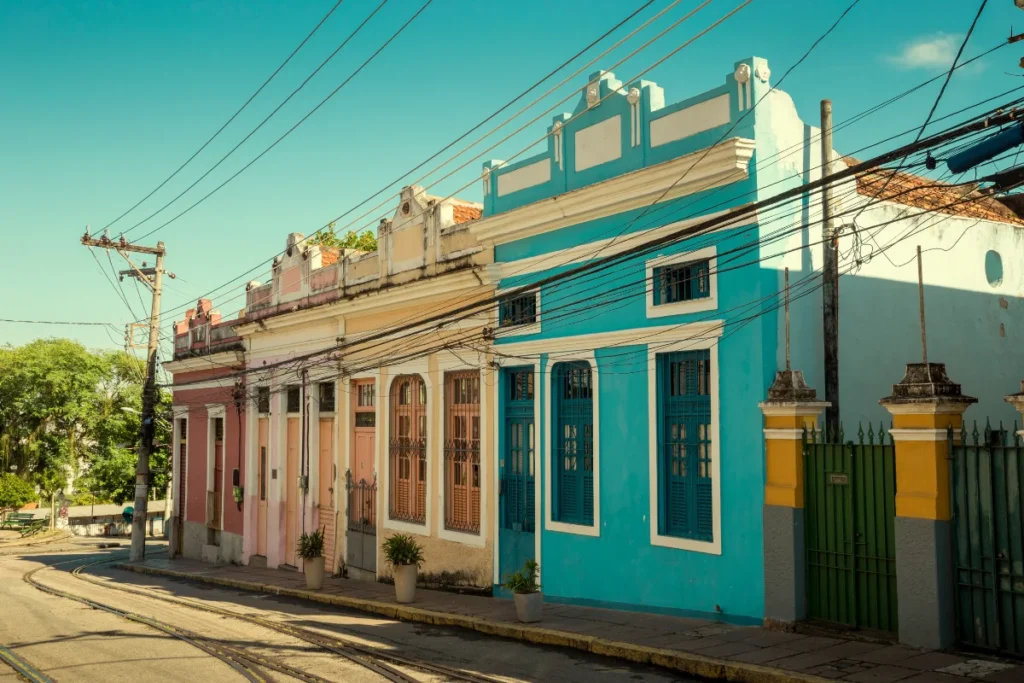
For a different side of Rio de Janeiro, head to Santa Teresa (near Rua Alm. Alexandrino), a charming, hilly neighborhood known for its colonial-style architecture, narrow winding streets, and artistic flair. This neighborhood is a cultural hub, with art galleries like Museu Chácara do Céu (Rua Murtinho Nobre, 93) displaying Brazilian art and offering views of the city. The vibrant Largo dos Leões square is another must-see, offering a lively atmosphere filled with street musicians, local eateries, and charming bars.
Santa Teresa is perfect for those looking to escape the bustle of the more tourist-heavy areas and dive into the bohemian side of Rio. Stop by Bar do Mineiro (Rua Paschoal Carlos Magno, 99) for a traditional feijoada and a caipirinha in one of the neighborhood’s most iconic bars.
Botafogo: Stunning Views and Easy Access to Landmarks
Botafogo (Avenida Pasteur, 520) is a neighborhood known for its breathtaking views of the Sugarloaf Mountain (Pão de Açúcar) and easy access to Rio’s famous landmarks. Take a cable car ride to the top of Sugarloaf Mountain for panoramic views of the city, Guanabara Bay, and Copacabana Beach. At the base of Sugarloaf, you can enjoy the views from Praia de Botafogo or relax in one of the charming cafes that line the waterfront.
Botafogo is also a great place for shopping, with malls like Botafogo Praia Shopping (Avenida Pasteur, 500) offering everything from high-street brands to Brazilian designers. If you’re in the mood for a great meal, head to Pizzaria Guanabara (Rua São Clemente, 27) for some of the best pizza in town.
Travel Tips for Getting Around:
Rio’s metro system is the easiest and most efficient way to get between these neighborhoods. The Linha 1 and Linha 2 metro lines connect key neighborhoods like Copacabana, Ipanema, and Botafogo. For places not directly accessible by metro, Uber is a reliable and comfortable option, particularly for late-night rides or reaching more distant locations like Barra da Tijuca or Tijuca Forest.
Always ensure you have a RioCard for easy access to all modes of public transportation, as it can be used on the metro, buses, and the VLT (Light Rail), providing a seamless and affordable travel experience.
Final Tips for Navigating Rio de Janeiro
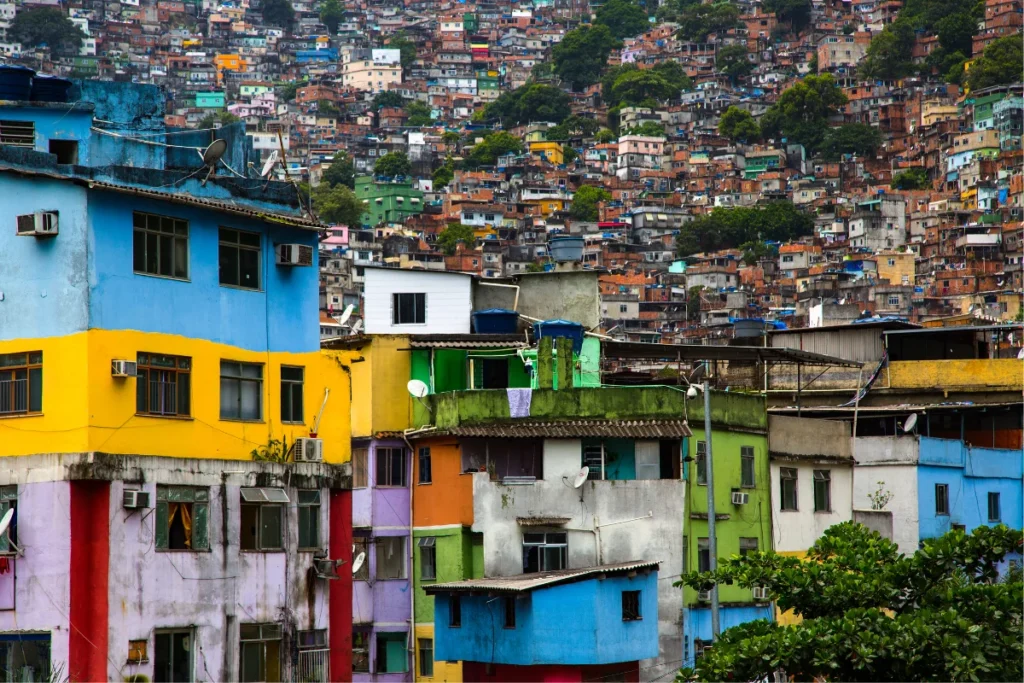
Rio de Janeiro is a vibrant and dynamic city, and navigating its public transportation system is part of the adventure. While the city’s transportation options are comprehensive, including buses, metros, and the VLT (light rail), it’s important to stay vigilant, particularly in busy areas. Always keep your belongings secure and within sight, especially when traveling through crowded bus stops or metro stations. Having a RioCard makes public transport more convenient and streamlined, but it’s still essential to plan your route ahead of time to avoid confusion or unexpected delays. Apps like Google Maps or Moovit can help you navigate the city’s extensive network with ease, ensuring a smoother journey.
Safety is key in busy, tourist-heavy areas like Copacabana and Ipanema. It’s a good idea to avoid flaunting valuables and to keep your phone and wallet in a secure pocket or bag. In general, be aware of your surroundings, especially during rush hour or late at night when public transport can be more crowded. For added convenience, Uber is a reliable alternative to public transport for more direct routes or if you’re traveling late at night.
Despite the need for caution, Rio’s public transport offers an excellent way to immerse yourself in the city’s rhythm and explore its diverse neighborhoods. The fast metro system, scenic VLT, and extensive bus routes make it easy to visit iconic landmarks like Christ the Redeemer, Sugarloaf Mountain, and the Selarón Steps. The joy of Rio de Janeiro lies not just in its sights but in the vibrant atmosphere that fills the streets, whether you’re exploring the artsy Santa Teresa district or soaking up the sun on one of the city’s iconic beaches..
Rio de Janeiro’s unique blend of culture, music, and nature creates an unforgettable experience, offering something for everyone—from the peaceful to the thrilling. Whether you’re strolling along the beaches, marveling at the views from Corcovado Mountain, or dancing to the rhythm of samba in the lively Lapa district, Rio de Janeiro will leave you with memories that last a lifetime.
Final Recommendations:

- If you’re looking for an unforgettable nightlife experience in Rio, Lapa (Rua do Lavradio) is the place to be. Known for its energetic atmosphere, Lapa is packed with bars, samba clubs, and live music venues, making it the perfect spot to immerse yourself in Rio’s iconic musical culture. The famous Arcos da Lapa (Lapa Arches) stand as a backdrop to the neighborhood’s lively nightlife scene, where you can enjoy authentic Brazilian rhythms like samba, bossa nova, and forró. Whether you’re sipping cocktails at a laid-back bar or dancing the night away in a bustling samba club, Lapa promises an experience that’s uniquely Rio de Janeiro.
- Tijuca National Park: A Nature Lover’s Paradise
- For those who crave a break from the city’s bustle, Tijuca National Park (Rua Francisco Eugênio, 495) offers a peaceful escape. One of the largest urban rainforests in the world, this expansive park is a haven for nature lovers. It features hiking trails that lead to stunning waterfalls, including Cascatinha Taunay, and offer panoramic views of Rio, including the iconic Christ the Redeemer statue. Whether you’re hiking, birdwatching, or simply soaking in the lush surroundings, Tijuca is a must-visit destination for anyone seeking adventure in nature.
Rio’s neighborhoods offer a fascinating mix of beach life, cultural experiences, and breathtaking views, making it one of the most exciting cities to explore in the world.



